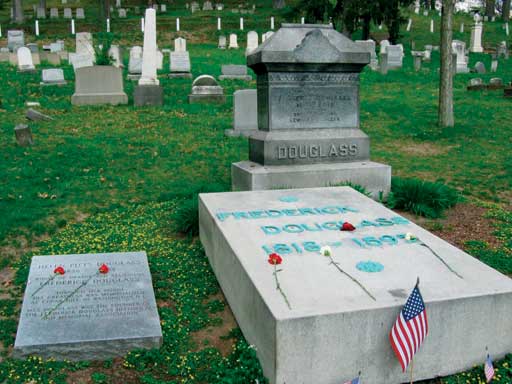
This is the longitude and latitude of the impossible;
this is the epicenter of the unthinkable;
this is the crossroads of the unimaginable:
the tomb of Frederick Douglass, three days after the election.
This is a world spinning away from the gravity of centuries,
where the grave of a fugitive slave has become an altar.
This is the tomb of a man born as chattel, who taught himself to read in secret,
scraping the letters in his name with chalk on wood; now on the anvil-flat stone
a campaign button fills the O in Douglass. The button says: Obama.
This is the tomb of a man in chains, who left his fingerprints
on the slavebreaker’s throat so the whip would never carve his back again;
now a labor union T-shirt drapes itself across the stone, offered up
by a nurse, a janitor, a bus driver. A sticker on the sleeve says: I Voted Today.
This is the tomb of a man who rolled his call to arms off the press,
peering through spectacles at the abolitionist headline; now a newspaper
spreads above his dates of birth and death. The headline says: Obama Wins.
This is the stillness at the heart of the storm that began in the body
of the first slave, dragged aboard the first ship to America. Yellow leaves
descend in waves, and the newspaper flutters on the tomb, like the sails
Douglass saw in the bay, like the eyes of a slave closing to watch himself
escape with the tide. Believers in spirits would see the pages trembling
on the stone and say: look how the slave boy teaches himself to read.
I say a prayer, the first in years: that here we bury what we call
the impossible, the unthinkable, the unimaginable, now and forever. Amen.

